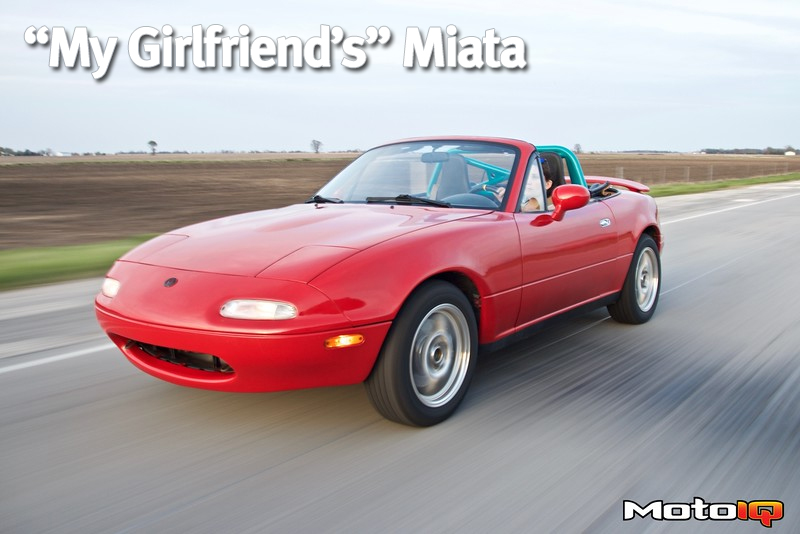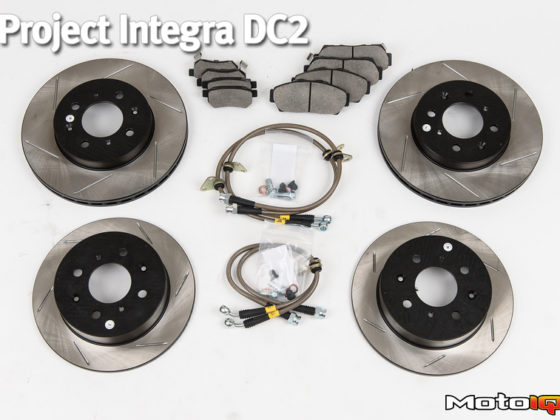,
 At this moment, admire your work and how fast things are going. Take a gander at the DBA rotors and see the paint on the edge. One or more of these colors will change depending on how hot your rotor gets. A great way to tell the working temperature of your brake system and ensure you have pads designed to work at the temperature the rotors are reaching.
At this moment, admire your work and how fast things are going. Take a gander at the DBA rotors and see the paint on the edge. One or more of these colors will change depending on how hot your rotor gets. A great way to tell the working temperature of your brake system and ensure you have pads designed to work at the temperature the rotors are reaching. Now this is slightly out of order of how I did it. I saved the lines and brake bleeding for the end, but I figured I'd include this information while we are working up front. The stainless lines attach to the factory brake lines pretty easily, but ensure you have the right tools before you start. You'll want to have a flare wrench to loosen the hardline from the factory rubber line, a regular wrench can easily round off the hardware and you'll hate yourself forever if you do that. You'll also want to make sure the rubber line is firmly grasped before loosening the hard line, I used a pair of vice grips as the rubber lines were going to be tossed. This reduces the chance of you damaging the 20+ year old hardline, which would mean a lot more work if it has to be fixed or replaced.
Now this is slightly out of order of how I did it. I saved the lines and brake bleeding for the end, but I figured I'd include this information while we are working up front. The stainless lines attach to the factory brake lines pretty easily, but ensure you have the right tools before you start. You'll want to have a flare wrench to loosen the hardline from the factory rubber line, a regular wrench can easily round off the hardware and you'll hate yourself forever if you do that. You'll also want to make sure the rubber line is firmly grasped before loosening the hard line, I used a pair of vice grips as the rubber lines were going to be tossed. This reduces the chance of you damaging the 20+ year old hardline, which would mean a lot more work if it has to be fixed or replaced. For the line going into the caliper body, there are a few things I'd suggest. First, as mentioned before, an adapter is included to allow the line to work with this caliper. I'd suggest removing it from the line and tightening it to the caliper body on its own. You want to be careful not to go crazy and overtighten this fitting, as you can damage the caliper body, but too loose and it will leak, such is the joy of pipe thread. I didn't tighten these enough the first time, which meant more brake bleeding later. No big deal though, just be sure to pay attention to this fitting to ensure it is leak-free. The line then connects to the fitting and is an easy task to tighten. Using a wrench to hold the adapter fitting on the caliper makes sure you don't accidentally overtighten anything.
For the line going into the caliper body, there are a few things I'd suggest. First, as mentioned before, an adapter is included to allow the line to work with this caliper. I'd suggest removing it from the line and tightening it to the caliper body on its own. You want to be careful not to go crazy and overtighten this fitting, as you can damage the caliper body, but too loose and it will leak, such is the joy of pipe thread. I didn't tighten these enough the first time, which meant more brake bleeding later. No big deal though, just be sure to pay attention to this fitting to ensure it is leak-free. The line then connects to the fitting and is an easy task to tighten. Using a wrench to hold the adapter fitting on the caliper makes sure you don't accidentally overtighten anything. Other than bleeding, the front is all squared away. Take another moment to reflect at the Civil War era hardware you pulled off the car. Word of warning, you may need a tetanus shot just looking at this photo.
Other than bleeding, the front is all squared away. Take another moment to reflect at the Civil War era hardware you pulled off the car. Word of warning, you may need a tetanus shot just looking at this photo. We gained 3.12 pounds up front because of the rotor, but worry not, that's kind of the point. The increased heat capacity of the massive size increase of the rotor is what makes for a great track and street brake system. On top of that, the added cooling capacity of the rotor ring design and aluminum center hat help me sleep better at night knowing the brakes will never be an issue when I hit the track.
We gained 3.12 pounds up front because of the rotor, but worry not, that's kind of the point. The increased heat capacity of the massive size increase of the rotor is what makes for a great track and street brake system. On top of that, the added cooling capacity of the rotor ring design and aluminum center hat help me sleep better at night knowing the brakes will never be an issue when I hit the track. The front calipers weigh in at a reasonable 6 pounds even. Pretty light weight for a cast, sliding caliper that looks like something found sitting next to the Titanic.
The front calipers weigh in at a reasonable 6 pounds even. Pretty light weight for a cast, sliding caliper that looks like something found sitting next to the Titanic. The Wilwood calipers help us feel better about the weight gain from the massive rotors though. Coming in at 2.78 pounds lighter makes me grateful for the aluminum and computer engineering that goes into making these calipers.
The Wilwood calipers help us feel better about the weight gain from the massive rotors though. Coming in at 2.78 pounds lighter makes me grateful for the aluminum and computer engineering that goes into making these calipers.


